The terms positive ease, negative ease, and no ease are frequently found in knitting patterns, and can be a hard concept to wrap your head around.
Many of you may find this scenario familiar: You’ve found the perfect sweater to knit, swatched for gauge (I can’t stress enough just how important this step is with garments), and it’s time to pick a size. When I first started knitting, I would just pick a size Small, because that’s what was mostly in my closet, without a thought to the schematic or finished measurements. I had absolutely no idea what ease meant, and so I just ignored it. Friends, I was the epitome of a lazy knitter. Fast forward through way too many sweaters that were either too tight or hanging off my shoulders. Someday I might share pictures. I almost gave up knitting. Seriously. For years afterwards, I stuck to accessories or knitting for babies – their sizes are a lot more standard than ours.
With the introduction of the internet came the ability to easily access knitting patterns from designers all over the world. As wonderful as this is, it further muddles the issue of sizing. A medium in the US is about equivalent to an XL in much of South America, so the lettered sizing becomes even more irrelevant. A number of designers and publishers, Nomadic Knits included, are trending towards using numbered sizing, either 28 (32, 36…) or 1 (2, 3, 4…), forcing the knitter to look at the finished measurements, rather than choosing the size they would in a department store. While initially frustrating, the long term outcome will likely be better-fitting sweaters. Yay!
It turns out that I learn best through extreme examples. Like how the North Pole has 24 hours of daylight at the summer solstice and 24 hours of darkness at the winter solstice, while the equator has 12 hours of daylight year-round. This helped me understand how summer days are longer in New York than in Florida, and vice versa in the winter.
So how does that relate to ease? Let’s find some extreme examples:
Negative Ease
Some of you may remember Lana Turner, the Sweater Girl from the 1940s and 50s; she really knew how to fill out a sweater. Some conservatives at the time went so far as to refer to “Sweater Girls” as a sign of the moral decline of postwar youth. If only they could see what girls are wearing today! I digress…
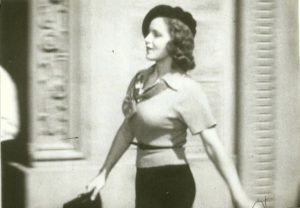
The term “negative ease” is used when the garment (in this case, the knitted sweater) is smaller than the person wearing it. The knitting will stretch to fit over your curves and really show them off. Danyella knows how to fill out the Beautifully Basic Tee, wearing a 36” tee on her 37” bust. If you look closely at her bust (purely in the quest for knowledge), you can see the knit stitches stretching out to fit. Stretchy fabrics, such as ribbed socks, or hat brims, are also examples of negative ease.
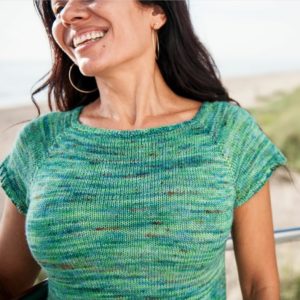
No Ease
This can be confusing, because no ease and negative ease feel like they should mean the same thing. In actuality, no ease means that when you put on the sweater, it fits your body exactly. The finished measurement of the sweater is exactly the same as your bust. This doesn’t happen often in knitting, mainly because sizes are typically written in 4” increments. Unless your bust falls neatly into one of those measurements (mine certainly doesn’t), you won’t typically be knitting with no ease.
Kayla fit perfectly into Great Falls from issue four : maryland/ dc/ virginia. You can see how the sweater isn’t stretched or loose, but just skims her body.

Positive Ease
Here’s where most of my knitting falls, and probably yours as well. By now you may have deduced that positive ease refers to extra room in the sweater. Think cozy pullovers, most cardigans, and boxy sweaters. Even sweaters that appear perfectly fitted tend to have an inch or two of positive ease (room to hide a big lunch!). I’m wearing the Beautifully Basic Tee with long sleeves with about an inch or two of positive ease – you can see that it still looks fitted and there’s not much room for anything other than an undershirt.
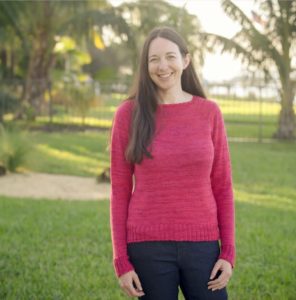
Jump to the next picture of Kayla wearing the Sleepover Sweater: it’s shown with fifteen inches of positive ease! Most of your sweaters will probably fall somewhere between these two examples, with roughly 3 – 4” of positive ease. Four inches leaves you with enough wiggle room for a long-sleeved shirt underneath, and the more ease you have, the cozier the sweater will feel as you wrap it around yourself, snuggling up inside with a cup of hot tea…. (it’s 37 degrees in NY today! I’m all about the cozy feels).
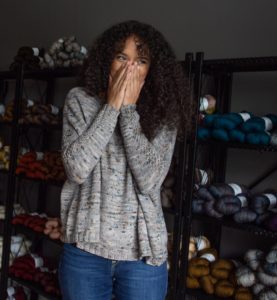
So tell me already, how do I pick what size to knit?
The ease-iest way to do this is to take a favorite sweater from your wardrobe (it can be hand-knit or store bought, but it’s best if it’s made with yarn in a similar weight to the one you’ll be knitting), and measure that at the bust. Choose the size that gives you the same finished measurement.
If you don’t have a sweater handy that fits the way you want this one to, read on. Read on even if you do have that perfect sweater, because we’re under quarantine and there’s not much else to do right now.
Measure your bust at the largest part (this is typically at the nipples), wearing the underthings you plan to wear with the sweater. If you think you’ll be wearing a bra with it, if we’re ever allowed out in public again, put one on when you measure. If you’ll be braless, measure with the girls swinging free.
Decide if you want the sweater to be snug (negative ease), fitted (no ease), or with wiggle room (positive ease). What kind of shirt do you want to wear under the sweater? A button-down shirt will need a little bit more room than a T-shirt. What kind of shirt are you wearing now? Pinch the fabric on either side of your bust, under the armpits. If you have about an inch of fabric in each hand, that means it has 4” of positive ease. Right now, I’m wearing a cozy sweatshirt and can pinch about 3” of fabric on each side. That means the sweatshirt has 12” of positive ease – the right and left sides each have 3” on both the front and back.
If the pattern has a schematic with the finished measurements, this will be ease-y, but if not, you can still find the information you need in the finished measurements in the pattern description.
Typically, sizing information will be described one of two ways:
- Finished measurements: 28 (32, 36…)”. To be worn with xx” of positive ease.
- To fit: 28 (32, 36…)” bust with xx” of positive ease.
If your pattern is written as #1, then you will choose the size with the finished measurements that equal your bust plus the amount of ease you want. If your bust measures 40” and the designer recommends 8” of positive ease, then you will cast on a 48” size. If you want the sweater to only have 4” of ease, you can cast on for the 44” size. If you want to show off your curves, cast on a 36” to have it stretch over your bust.
You don’t have to do exactly what the designer says. Ease directions are recommendations, and can be changed to fit the way you want.
If your pattern is written as #2, it means that the designer has a specific amount of ease in mind, and has written the pattern to accommodate that. Let’s say that the pattern states “to fit…. with 4” of positive ease.” This means that the finished measurement will be 4” larger than your bust size. If your bust is 40” and you’re happy with 4” of positive ease, then cast on the 40” size. If you’d prefer 8” of positive ease, then you’ll cast on the 44” size, to add another 4” of ease.
Important Disclaimer
If you’re straying more than one size above or below the recommended size to accommodate your desired ease, you may have difficulty with getting a good fit at the shoulders and neck, as the entire sweater will be larger. Picture the 1980s off-the-shoulder sweaters. I have made more than one of these accidentally, from knitting too large a size. If you have a pattern that recommends 4” of ease, but you prefer 12”, you’ll probably be happier with the overall fit if you choose a sweater design with more ease worked into it (like Sleepover from issue four).
That was ease-y, right?
This conversation could go a lot more in depth, discussing how to cast on for a size to fit your neck and shoulders, and then using short rows or extra increases to increase the ease in just the body, but that’s a blog for another day.
Happy and healthy knitting!
xo
Melissa
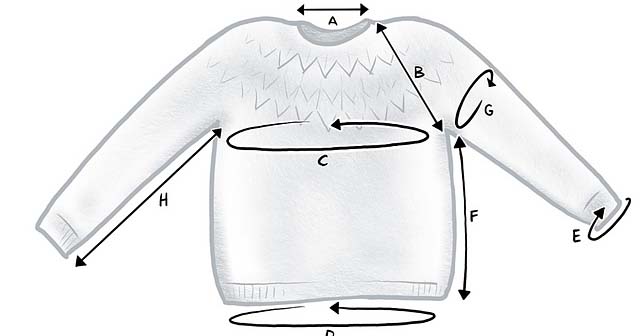
11 Comments. Leave new
Finally, it all makes sense now! Thank you!!!
Perfect timing for me! Wonderfully written-useful, and clear! thank you!
Thank you for making this ease-y!
Easy! Thank you 😊
I finally understand sizing! Thank you.
Wow I learnt something new today. Thank you, I’m 75 years old, and never thought about it ,just knitted as I went.
I’m so glad you found it useful!
xo
Melissa
Is there a way to print your instructions but without pictures? Good article. thank you.
Hi Norma,
If you copy the article and paste it into a doc, you can then delete the photos and print just the parts you want. Hope this helps!
🙂 Melissa
You have made this Positively Easy to understand . Thank you so much. I am saving this to my files for future reference and if anyone wants to know the differences I can esxplainnit to them.
We’re so glad you found it useful! Happy Knitting 🙂